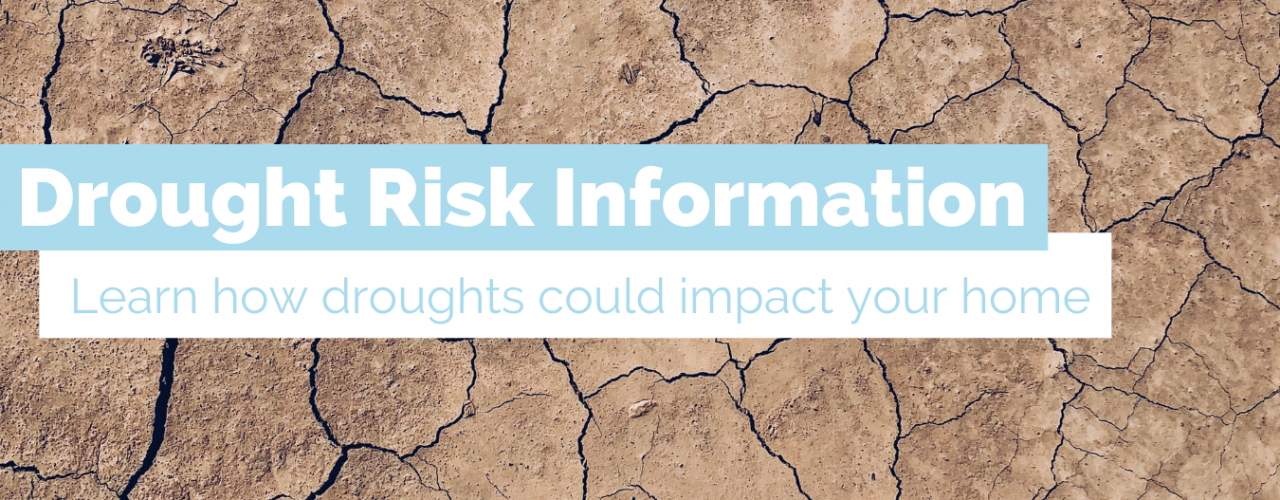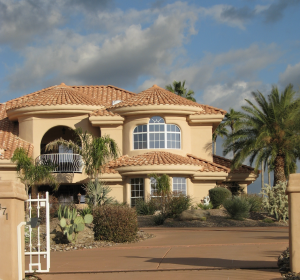
As temperatures rise, droughts are expected to become more frequent and severe across the United States. Learn more about what contributes to water stress, how to prepare your home for a drought, and which areas in the U.S. are most at risk.
Using information from First Street Foundation and ClimateCheck, to provide comprehensive climate risk information for every zip code, neighborhood, city, and county in the contiguous U.S.
Ready to find your dream home?
It’s that easy. Let us put our experience to work for you.
Drought Risk Frequently Asked Questions
1) What is the United States drought monitor?
Weather scientists use a system known as the US Drought Monitor (USDM) to monitor, forecast, plan and inform people of an upcoming drought. The system uses weather satellites to estimate the amount of water being evaporated and transferred between the land, plants, and the atmosphere. The US drought monitor is updated every week to show the location and intensity of droughts across the country. These weekly comparisons allow scientists to produce a drought risk map each week to help determine how much of the US is currently in a drought. Here is the current drought risk map.
2) What is water stress?
3) What are the types of water stress?
4) What is a drought?
A drought occurs when there is a lack of precipitation—such as snow, sleet, or rain—resulting in a water shortage for a long period of time. While droughts occur naturally, human activity, such as water use and management, can also cause a drought.
There are four types of drought:
- Meteorological – lack of precipitation
- Agricultural – lack of moisture in the soil where crops grow
- Hydrological – low levels of water in lakes and reservoirs
- Socioeconomic – water shortages in drinking and running water
5) Where do droughts occur?
Actual drought conditions vary from region to region, and the determination of a drought is based on an area’s specific weather patterns. For example, six rainless days on the tropical island of Bali could be considered a drought for that area. Whereas in the Libyan desert, annual rainfall of less than seven inches would be considered a drought.
6) Which areas in the US are most at risk of drought?
The National Oceanic and Atmospheric Administration (NOAA) gives each state a drought vulnerability score. This score is made up of three parts: sensitivity, exposure, and ability to adapt. On the drought vulnerability map, darker colors show higher overall drought vulnerability and other factors that also increase the state’s vulnerability. In the U.S., droughts are most likely to occur in the Midwest and the South. As of May 4, 2021, nearly 40% of the U.S. is in drought. When looking at just the lower 48 states, that number rises to nearly 47%.
7) How to prepare your property for a drought?
When you are thinking about preparing your property for a drought, it’s recommended you use water-wise landscaping and consistently monitor your water usage. Try planting native, drought-tolerant vegetation, these plants are adapted to the climate and you won’t need to water them as frequently. When planting these native plants make sure to use plenty of mulch to retain moisture in the soil, mulch helps keep the weeds away which ultimately take water away from your plants. A great way to monitor your watering of these plants is to implement smart irrigation. You can do this one of two ways: you can drip-irrigate with a hose that has small holes and move it around the yard, or if you have a sprinkler system, install a smart controller that monitors moisture in the soil and turns on sprinklers as needed. You can also try rainwater harvesting, planting smaller plants, or keeping your grass a bit longer than you normally would to retain more moisture.
8) Can a drought cause damage to your home’s foundation?
Foundations can shift, crack, sink when the surrounding soil loses moisture due to extended periods of dryness . In areas with clay soil, drought-induced foundation problems are often more severe because dry clay soil can shift significantly. Brick homes may experience more foundation cracks because their greater weight puts more pressure on the soil than homes constructed from siding or wood.
When soil is overly dry:
- Driveways and sidewalks tend to crack, as do brick walls, drywall, tile and stucco.
- Homeowners may notice windows and doors sticking when the home’s foundation shifts even slightly.
- Pipes may break if they are bracketed to the foundation, which may cause leaks.
Drought can affect the structural integrity of your home, so it’s wise to learn how to look at the drought reports so you can take steps to prevent damage.
The Top 10 U.S. Cities Most at Risk
of Water Stress (Droughts)
| Rank | City | Drought risk rating | Average water stress (historical) | Average 2050 water stress |
|---|---|---|---|---|
| 1 | Henderson, NV | 100 | 1.44 | 1.54 |
| 2 | Las Vegas, NV | 100 | 1.44 | 1.54 |
| 3 | San Antonio, TX | 90 | 0.94 | 1.12 |
| 4 | San Diego, CA | 86 | 0.81 | 0.96 |
| 5 | Los Angeles, CA | 84 | 0.59 | 0.74 |
| 6 | Long Beach, CA | 82 | 0.53 | 0.66 |
| 7 | Colorado Springs, CO | 81 | 0.60 | 0.70 |
| 8 | Santa Ana, CA | 77 | 0.69 | 0.83 |
| 9 | Anaheim, CA | 76 | 0.62 | 0.74 |
| 10 | Denver, CO | 70 | 0.32 | 0.42 |
Interested in moving out of these areas of water stress?
It’s that easy. Let us put our experience to work for you.
*Drought risk is measured by the ratio of water demand to water supply, based on historical and projected information about water availability and human uses. Water stress values over 0.4 are considered at especially high risk of water shortages.





